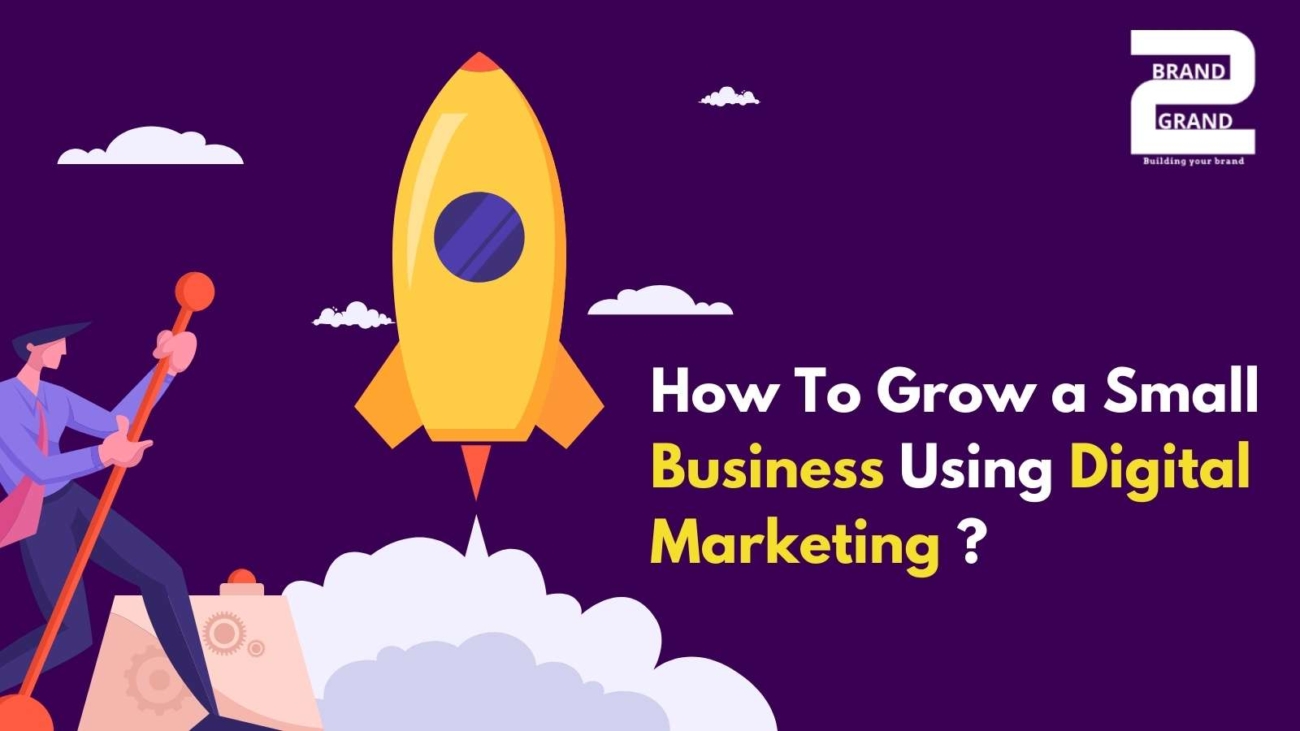As of my last knowledge update in January 2022, I don’t have real-time data on how small businesses are specifically spending their marketing dollars in 2024. However, I can provide you with insights into general trends and strategies that small businesses often adopt. For the latest and most accurate information, please refer to recent industry reports, surveys, and studies conducted in 2024. Here are some common trends and strategies that were relevant for small businesses in marketing:
1. Digital Marketing Dominance:-
Small businesses continued to allocate a significant portion of their marketing budget to digital channels. This includes investments in social media marketing, search engine optimization (SEO), email marketing, and online advertising.
2. Social Media Advertising:-
Platforms like Facebook, Instagram, Twitter, and LinkedIn remained popular for small businesses to connect with their target audience through paid advertising. Social media ads offer targeted options, making it a cost-effective choice for reaching specific demographics.
3. Content Marketing:-
Creating valuable and relevant content remained a priority for small businesses. Content marketing, including blog posts, videos, and infographics, helps establish authority, engage audiences, and improve search engine rankings.
4. Influencer Partnerships:-
Collaborating with micro-influencers or local influencers became a popular strategy for small businesses looking to leverage trusted voices in their communities.
5. Local SEO:-
As local search continued to play a crucial role, small businesses focused on optimizing their online presence for local search through tactics such as local SEO, Google My Business optimization, and online reviews.
6. Email Marketing Automation:-
Email marketing remained an effective and budget-friendly tool for small businesses. Automation features helped them nurture leads, engage customers, and promote products or services.
7. Video Marketing:-
The popularity of video content persisted, and small businesses embraced video marketing for promotional and educational purposes. Short-form videos for social media and longer-form content for websites and YouTube were common.
8. Mobile Optimization:-
Given the prevalence of mobile device usage, small businesses invested in ensuring their websites and marketing materials were optimized for a seamless mobile experience.
9. Customer Retention Programs:-
Small businesses recognized the value of retaining existing customers. Loyalty programs, personalized offers, and targeted communication aimed at keeping customers engaged and satisfied were part of marketing strategies.
10. Community Engagement:-
Building a sense of community and engaging with the local audience remained a focus. Small businesses often participated in local events, sponsorships, and collaborations to strengthen their ties with the community.
11. Data Analytics Tools:-
Utilizing data analytics tools became more common among small businesses. Analyzing customer behavior, campaign performance, and other key metrics helped in making informed marketing decisions.
12. Partnerships and Collaborations:-
Small businesses explored partnerships and collaborations with other local businesses or complementary brands, enhancing their reach and attracting shared audiences.
Keep in mind that the specific strategies adopted by small businesses can vary based on their industry, target audience, and geographic location. To get the most accurate and recent information, consider looking into industry reports, case studies, and surveys specific to small businesses in 2024.
How to grow a small business using digital marketing?
Growing a small business using digital marketing involves leveraging online channels and strategies to reach a broader audience, increase brand awareness, and drive customer engagement. Here’s a comprehensive guide on how to grow a small business using digital marketing:
1. Build a Strong Online Presence:-
– Website Optimization: Ensure your website is user-friendly, mobile-responsive, and optimized for search engines (SEO).
– Google My Business: Claim and optimize your Google My Business listing for local visibility.
2. Define Your Target Audience:-
– Identify your ideal customers and create buyer personas to tailor your marketing efforts accordingly.
3. Content Marketing:-
– Create valuable and relevant content to showcase your expertise and attract your target audience.
– Blogging, videos, infographics, and ebooks can all contribute to a robust content marketing strategy.
4. Social Media Marketing:-
– Choose social media platforms where your audience is active.
– Develop a content calendar and share a mix of promotional and engaging content.
– Utilize paid advertising on platforms like Facebook and Instagram.
5. Email Marketing:-
– Build and segment your email list for targeted communication.
– Implement personalized and automated email campaigns.
– Offer exclusive promotions and incentives to subscribers.
6. Search Engine Optimization (SEO):-
– Optimize your website for relevant keywords to improve search engine rankings.
– Create quality backlinks and regularly update your content.
7. Paid Advertising:-
– Use Google Ads for targeted search engine advertising.
– Consider social media advertising on platforms like Facebook, Instagram, and LinkedIn.
8. Leverage Local SEO:-
– Ensure accurate business information across online directories.
– Encourage customer reviews and respond promptly to feedback.
9. Mobile Optimization:-
– Optimize your website and content for mobile users.
– Consider mobile advertising options for reaching a broader audience.
10. Influencer Marketing:-
– Collaborate with local influencers or micro-influencers in your industry.
– Leverage influencer partnerships for product/service promotions.
11. Analytics and Data Tracking:-
– Use analytics tools to track website traffic, user behavior, and marketing campaign performance.
– Analyze data to make informed decisions and optimize your strategies.
12. Customer Engagement:-
– Actively engage with your audience on social media and respond to comments and messages.
– Encourage user-generated content and customer testimonials.
13. E-commerce Integration (if applicable):-
– If your business involves selling products, consider setting up an online store.
– Optimize the checkout process and offer secure payment options.
14. Partnerships and Collaborations:-
– Explore partnerships with other local businesses for cross-promotions.
– Collaborate with influencers or industry experts for joint initiatives.
15. Customer Retention Programs:-
– Implement loyalty programs and offer exclusive deals to repeat customers.
– Regularly communicate with existing customers through newsletters and updates.
16. Stay Updated and Adapt:-
– Stay informed about industry trends and emerging digital marketing strategies.
– Continuously adapt your approach based on performance metrics and changing market dynamics.
Remember that consistency is key in digital marketing. Regularly monitor your efforts, analyze data, and make adjustments to optimize your strategy over time. Digital marketing is an ongoing process that requires adaptation and refinement based on your business goals and the evolving digital landscape.
How to grow business in digital marketing 2024
Growing a business through digital marketing in 2024 will require a strategic and adaptable approach, given the evolving landscape. Here are key strategies to consider:
1. Understand Your Audience:-
– Conduct thorough audience research to understand their needs, preferences, and pain points.
– Create detailed buyer personas to tailor your digital marketing efforts effectively.
2. Quality Content Creation:-
– Invest in high-quality, relevant, and engaging content across various formats (text, video, audio, visuals).
– Consistently provide value to your audience to build trust and authority.
3. SEO Optimization:-
– Stay up-to-date with SEO best practices and algorithm changes.
– Focus on optimizing for voice and visual search.
– Use keyword research and on-page SEO to improve your website’s visibility in search results.
4. Personalization:-
– Leverage data and AI to deliver personalized experiences to your audience.
– Use dynamic content and tailored recommendations to engage users.
5. Mobile Optimization:-
– Ensure your website and content are mobile-friendly and load quickly.
– Optimize for mobile search, as mobile users are a significant portion of your audience.
6. Social Media Strategy:-
– Be present on the social media platforms where your audience is most active.
– Create engaging content, interact with your followers, and use paid advertising to expand your reach.
7. Email Marketing:-
– Develop a robust email marketing strategy to nurture leads and maintain customer relationships.
– Personalize email content and use automation for efficiency.
8. Video Marketing:-
– Invest in video content and live streaming.
– Use video to tell stories, demonstrate products, and connect with your audience.
9. Influencer Partnerships:-
– Collaborate with micro-influencers or industry experts to reach a wider audience.
– Ensure influencers align with your brand values and target demographics.
10. Data Analytics:-
– Use analytics tools to track the performance of your digital marketing efforts.
– Make data-driven decisions to optimize your strategies.
11. E-commerce Expansion:-
– If applicable, consider expanding your e-commerce capabilities to facilitate online sales.
– Implement an efficient and user-friendly online shopping experience.
12. Local SEO:-
– For businesses with physical locations, focus on local SEO strategies to attract nearby customers.
– Encourage customer reviews and ensure your Google My Business profile is up-to-date.
13. Sustainability and Social Responsibility:-
– Embrace sustainable and socially responsible practices and communicate them in your marketing efforts.
– Highlight your commitment to ethical and environmentally-friendly initiatives.
14. Adapt to Technological Changes:-
– Stay updated with emerging technologies like AR, VR, and blockchain that may impact your industry.
– Be ready to incorporate relevant technology into your marketing strategies.
15. Compliance and Ethics:-
– Stay compliant with data protection and privacy regulations.
– Be transparent in your data collection and usage practices.
16. Community Building:-
– Foster an online community around your brand.
– Engage with your audience on social media and encourage user-generated content.
17. Test and Experiment:-
– Continuously test and experiment with different digital marketing tactics.
– Be open to trying new channels and approaches as the digital landscape evolves.
18. Invest in Training and Talent:-
– Ensure your team has the necessary skills and knowledge to implement effective digital marketing strategies.
– Consider investing in ongoing training and hiring experts if needed.
Digital marketing in 2024 will be characterized by adaptability and a strong focus on providing value and personalized experiences to the audience. Keep an eye on industry trends, stay updated with best practices, and be ready to adjust your strategies as needed to achieve business growth in the digital space.



